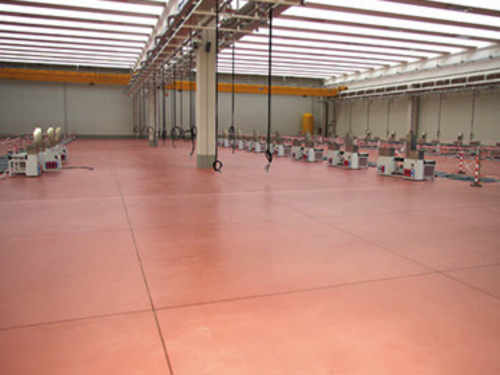Traditional industrial flooring
Laying an industrial concrete floor
Cutting the floor into sections
Once the concrete has been cast and has hardened, it is then cut into squares using diamond disc cutters, with which the contraction joints and construction joints are created.
The former allow the flooring to move freely following variations in volume caused by plastic or hygrometric shrinkage or changes in temperature. In this way, the floor is not constrained and is not, therefore, subject to a level of traction higher than the level of resistance that the floor has developed up until that time. Cracks are kept in check, and any that do occur will remain underneath the cut.
The latter are continuous solutions that identify casting beds poured at different times. As well as enabling horizontal shifts, they also impede vertical movements. It is essential that that concrete slabs a different deformation sequence, while at the same time transferring stresses amongst themselves.
Finishes
Quartz powder in different colours is used as a finish to the floor, giving it an attractive appearance and helping to increase its surface resistance to abrasion and bumps.
Dust-resistant and silicate treatments are other possible finishes. They both create a protective layer that can reduce the cleaning costs and makes the floor shine more brightly.
Recodi has been designing and laying traditional floors for 50 years, always working to ensure a finish of the highest possible quality.

